Last Updated on February 5, 2024 by teamobn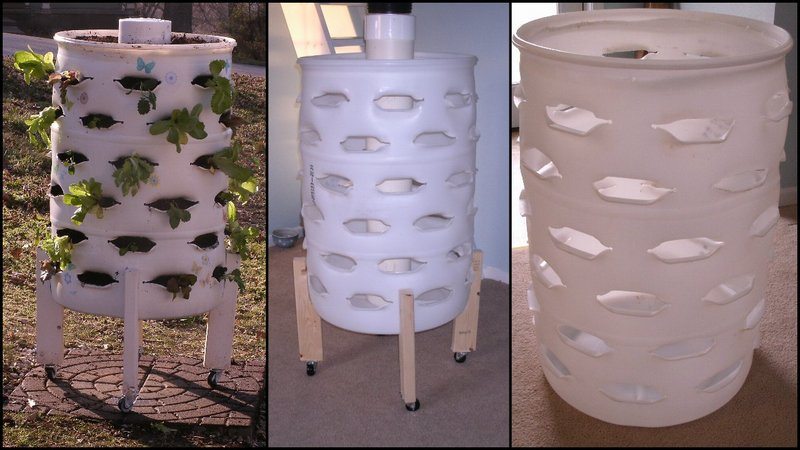
Have you tried upcycling your plastic barrels? Why don’t you try having these DIY Barrel Planters? Here’s how to make a cheap, cheerful vertical garden that works in almost any space.
Our world is building up growing quantities of plastic, and as the demand for plastic grows, so does the need for collecting, recycling, and disposing of it responsibly. Plastic barrels should be recycled where possible, as should all plastics.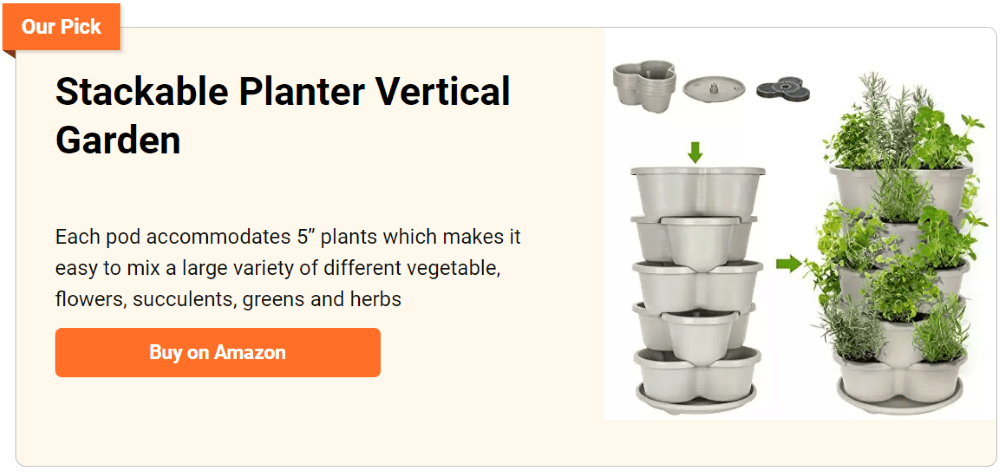
Also, until the plastic is recycled,, it must be disposed of somehow. In the past, a lot of plastic has been dumped into landfills, but this is now frowned upon, and most landfills charge extra for dumping plastic.
Creating a DIY barrel planter is a great way to save these plastic barrels from landing in landfills.
DIY Empty Plastic Barrel Planters is a great way of creating a vertical planter. Your empty plastic barrel will become a beautiful planter and a container to allocate your small plants.
You can decorate your plant with a few stones and decorative mosses and then add some decorative objects such as some old wine corks, a beautiful ceramic pot, or some old vintage bottles.
Building a DIY Barrel Planter
Materials:
- 55-gallon Plastic Drum Barrel
- 6-inch Schedule 40 PVC Pipe
- Another 6-inch PVC Pipe (lighter duty)
- Permanent Marker
- Flexible Plastic Ruler
- 2 x 4 Timber
- Test Plugs
- Timber Legs
- 2-1/2″ Bolts, Nuts and Washer
Tools
- Sawzall
- Drill
- Jigsaw, with a regular multi-purpose blade
- Butter Knife
- Torch
- Wrench
- Silicone Gun Sealer
- Hot Glue Gun
Instructions
Gather all the materials
A 55-gallon plastic drum barrel will be a good choice. Check out the list that we prepared for you to gather for this DIY project.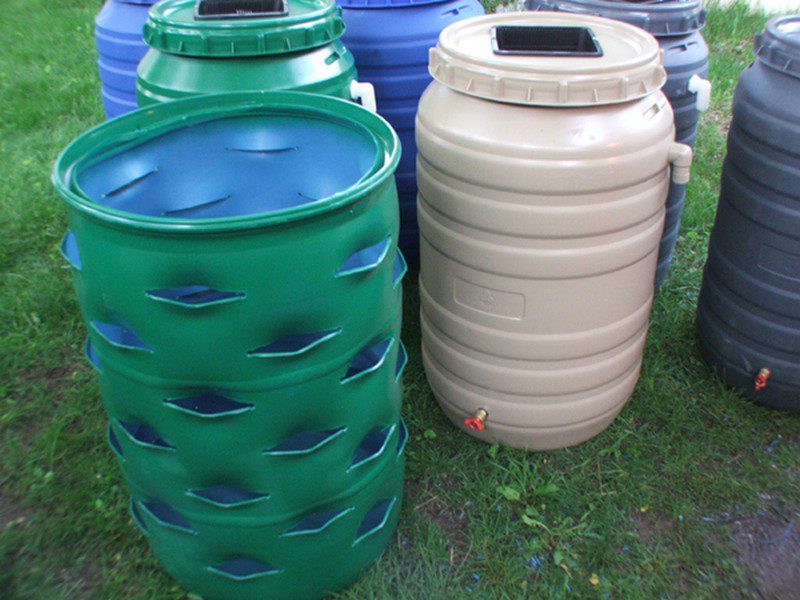
Clean the Plastic Barrel
Plastic storage barrels come in all shapes and sizes. They are a staple in every home, garage, and warehouse. These barrels store everything from food to plastics to chemicals. They are also used as a temporary storage solution.
Every time a barrel is used to store anything, the residue from the chemical the barrel was previously storing will still be in the barrel. When a new chemical is stored in that barrel, the residue from the previous chemical will be combined with the new chemical.
This could be potentially harmful to anyone using the barrel. To be safe, clean out your chemical containers thoroughly before using them for anything else.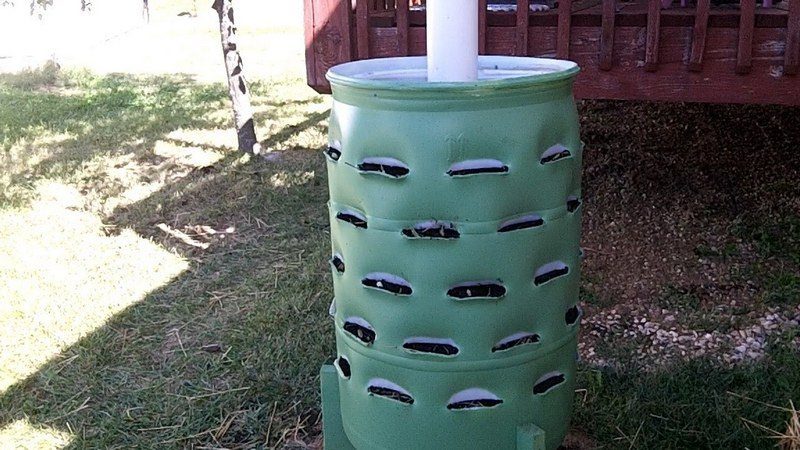
Cut holes in your plastic barrels
To create a barrel planter, mark your plastic barrels with a marker. These marks are where you cut or drill holes for your plants.
After cutting your plastic barrels, prepare to attach your PVC Pipe, which will serve as an irrigation system for your vertical planter. You should poke holes in the PVC Pipe first before attaching it to the barrel.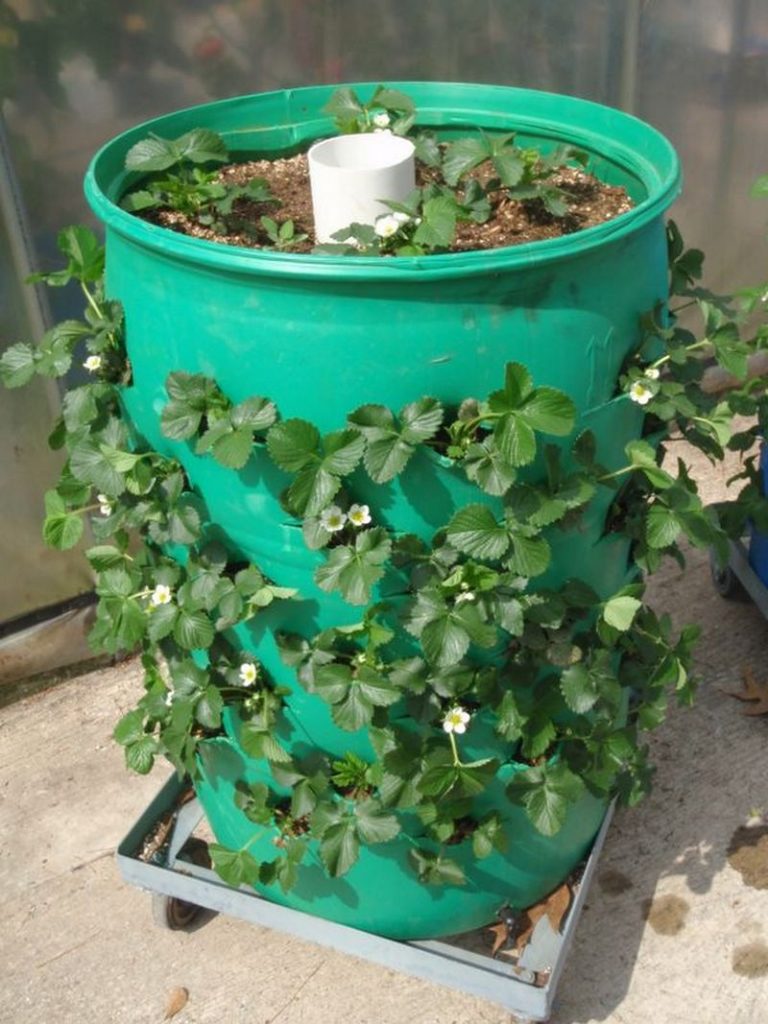
Fill your Barrel Planter with Soil
After attaching the watering system to your Plastic Barrel Planter, fill it with soil and fertilizer. Once the soil is in, you can plant seeds or seedlings.
And you can put wheels on it. The wheels will turn the planter into a mobile vertical garden.
Types of Barrels for Planters
Barrel planters offer a unique and eco-friendly way to enhance your garden. They come in various materials and sizes, each with its benefits. Here, we explore the different types of barrels you can use as planters, helping you choose the right one for your space.
Plastic Barrels
Plastic barrels are lightweight and durable, making them a popular choice for DIY barrel planters. They’re often made from recycled materials, contributing to an eco-friendly garden. These barrels resist rot and pests, and with proper drainage holes, they’re ideal for various plants.
Wooden Barrels
Wooden barrels, especially those repurposed from wine or whiskey barrels, add a rustic charm to gardens. They’re perfect for growing both decorative plants and herbs. However, they require more maintenance than plastic barrels, as wood can rot or dry out if not properly treated.
Metal Drums
Metal drums can be transformed into stylish barrel planters with a modern twist. They’re extremely durable and can handle harsh weather conditions. Treating the metal to prevent rust and ensure the barrel has adequate drainage to protect plant roots is important.
Fiberglass Barrels
Fiberglass barrels are a less common but very practical option for planters. They combine the durability of plastic with the aesthetic appeal of painted or textured finishes. Fiberglass is resistant to weathering and can mimic the look of more traditional materials.
Choosing the right barrel for your planter depends on your garden’s style, budget, and maintenance level you’re willing to commit to. Each type of barrel planter brings its character and benefits to your garden, making it important to select the one that best meets your needs.
Click on any image to start the lightbox display. Use your Esc key to close the lightbox. You can also view the images as a slideshow if you prefer 😎

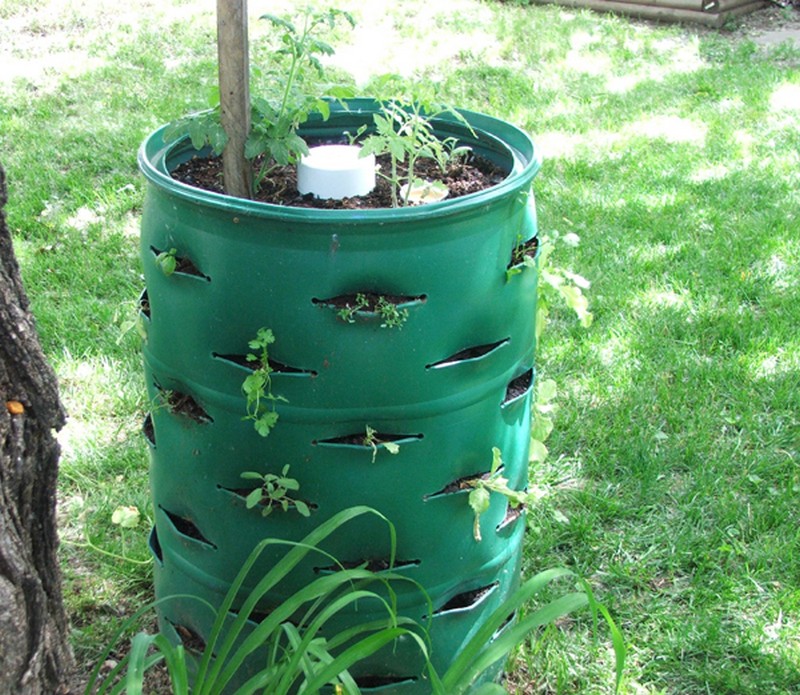
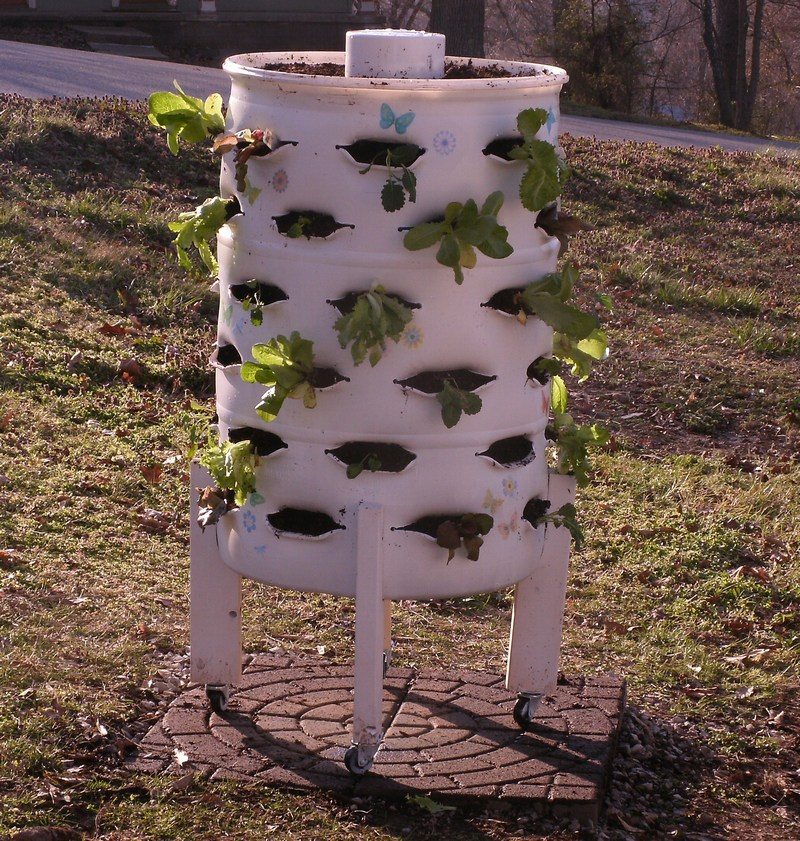
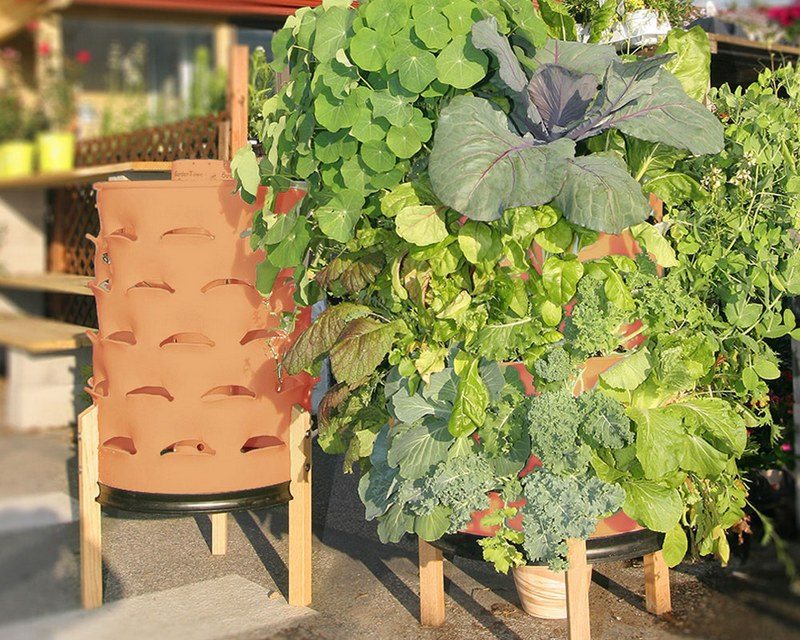

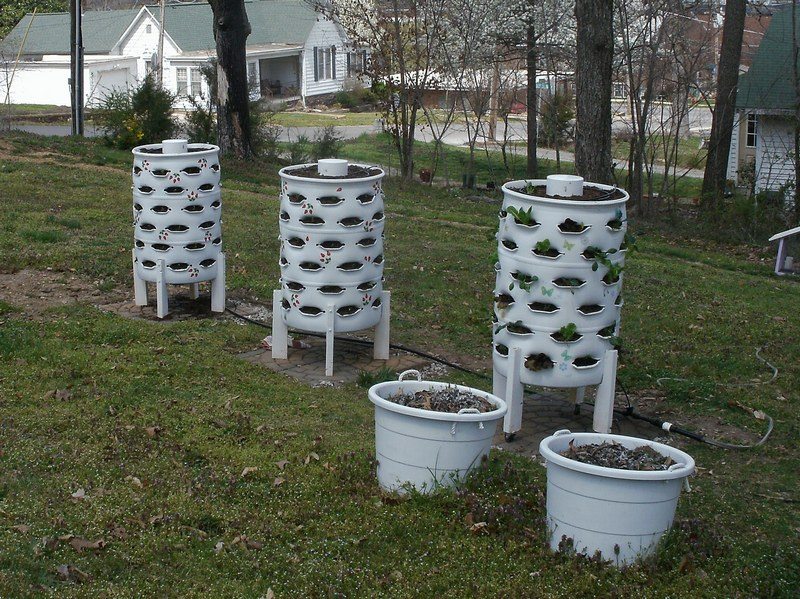

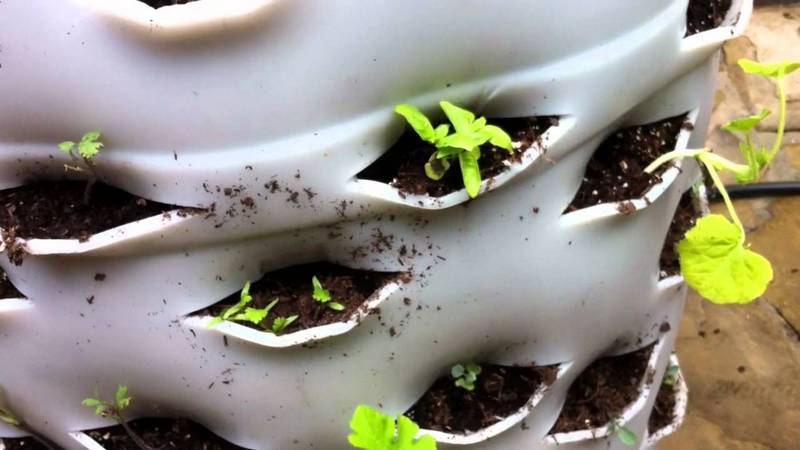
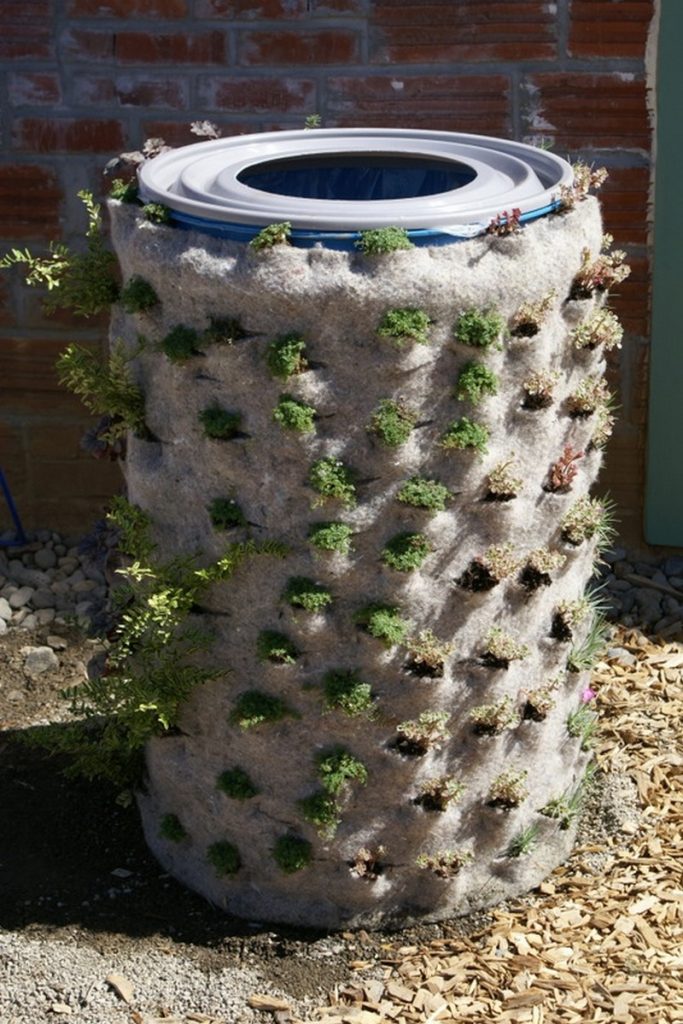
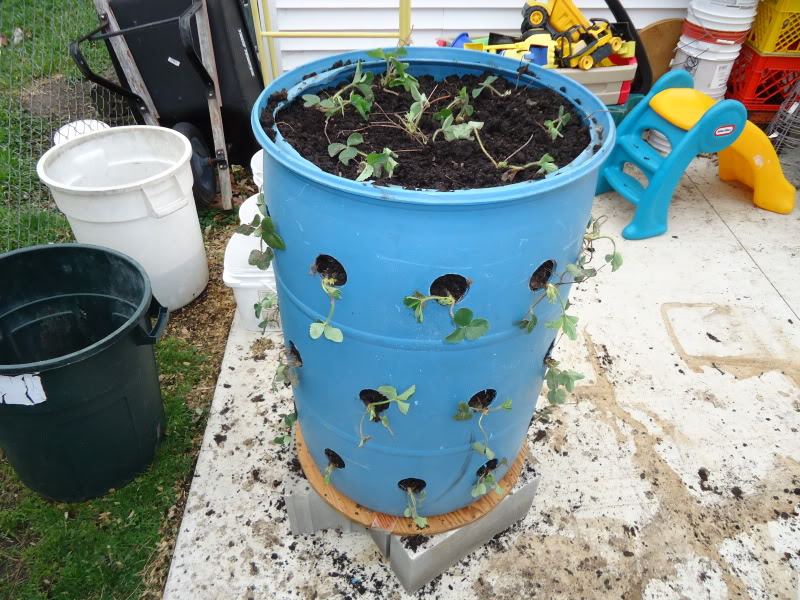
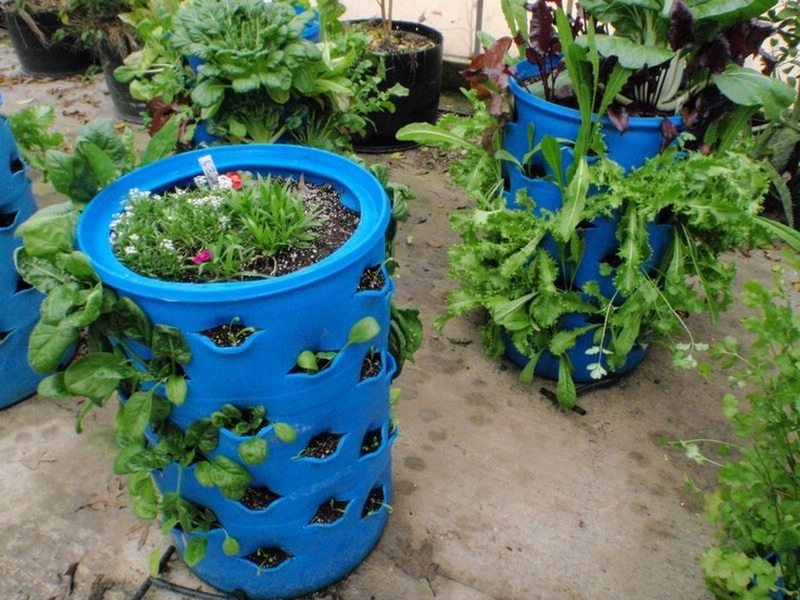
Thanks to Half-Pint Homestead for this great project. You can get step by step instructions here…
Choosing the Right Plants for Your Barrel Planter
Choosing the right plants for your barrel planter is crucial for creating a thriving garden space. Your barrel’s size, depth, and material can influence what plants will best suit your planter. Here’s how to select plants that will flourish in your barrel planter.
Consider the Depth
The depth of your barrel planter affects the type of plants you can grow. Deep barrels are perfect for root vegetables like carrots, potatoes, and larger shrubs or small trees. Shallow barrels are more suited to herbs, annual flowers, and succulents.
Think About Sunlight
Before selecting plants, consider the sunlight your barrel planter will receive. Full-sun plants require at least six hours of direct sunlight daily, while shade-tolerant plants can thrive with less. Place your barrel planter in the appropriate spot based on the plants you wish to grow.
Choose Plants Based on Water Needs
Grouping plants with similar water needs in your barrel planter ensures they all thrive. Some plants prefer dry conditions, while others need consistently moist soil. Succulents and Mediterranean herbs like rosemary and thyme tolerate drought, whereas ferns and impatiens prefer more moisture.
Mix and Match for Visual Interest
Creating a visually appealing barrel planter combines plants of various heights, textures, and colors. Place taller plants in the center for height, add bushy mid-sized plants around them, and finish with trailing plants at the edges. This technique creates a lush, full look.
Selecting Plants for Your Barrel Planter
Here are some plant ideas for your barrel planter, based on different conditions:
- Zinnias: With their bright, daisy-like flowers, zinnias are a great addition to any sunny barrel planter. They come in multiple colors and can bloom all summer long.
- Salvia: These tall, spike-like blooms attract pollinators and add height to your planter. Salvia comes in various colors, including blue, red, and white.
- Peppers: Small pepper plants, such as bell or chili peppers, are decorative and edible, making them a functional choice for sunny planters.
- Begonias: Offering a wide range of colors and types, begonias are excellent for adding a splash of color to shady spots. They require little maintenance and can bloom abundantly in the right conditions.
- Coleus: Known for its vibrant, variegated leaves, coleus can add a burst of color without the need for flowers. It’s a versatile plant that thrives in both shade and partial sun.
- Astilbe: With its feathery, plume-like flowers, astilbe adds texture and color to shaded barrel planters. It prefers moist soil and can provide a soft, romantic look.
- Cherry Tomatoes: Compact varieties of cherry tomatoes are perfect for barrel planters, providing a bountiful harvest throughout the summer.
- Dwarf Carrots: These smaller carrot varieties are ideal for the depth of barrel planters and mature quickly for a speedy harvest.
- Cucumbers: Choose compact or bush varieties of cucumbers for your barrel planter. They can be a fruitful addition to your edible garden with proper support.
Choosing the right plants for your barrel planter ensures a healthy and beautiful garden. Consider the planter’s location, the climate, and how much care you can provide when selecting plants. With the right mix, your barrel planter will become a vibrant focal point in your garden.
Irrigation Tips for Barrel Planters
Irrigation is key to maintaining a healthy and thriving garden in your barrel planter. Proper watering ensures your plants receive the moisture they need to grow without over or under-watering them. Here are some essential irrigation tips tailored for barrel planters, helping keep your garden vibrant and productive.
Check Soil Moisture Regularly
Ensuring your plants receive just the right amount of water begins with frequent soil moisture checks. This practice is more than just sticking your finger into the soil; it’s about understanding the needs of your plants.
The top inch of soil should be your gauge—when it feels dry to the touch, it’s time to water. However, different plants have different water needs, so consider the specific requirements of what you’re growing. For example, succulents and cacti prefer drier conditions, while leafy vegetables and flowers may need more frequent watering.
By checking soil moisture regularly, you can tailor your watering schedule to match the needs of each plant, preventing stress from both over-watering and under-watering. This simple yet effective method promotes strong, healthy root systems and thriving plants.
Use a Drip Irrigation System
Drip irrigation systems are a game-changer for barrel planters, offering a targeted, efficient watering solution. By delivering water directly to the base of each plant, these systems ensure that every drop goes where it’s needed most—right to the roots. This method minimizes water loss due to evaporation and runoff, making it an environmentally friendly and cost-effective option.
Setting up a drip irrigation system can be straightforward: you’ll need a main hose connected to your water source and smaller feeder lines that deliver water to individual plants. Adding a timer automates the process, providing your garden with consistent moisture without the need for daily manual watering. This setup is particularly beneficial during hot spells or if you’re away from home, ensuring your plants remain hydrated and healthy in your absence.
With a drip irrigation system, you can create a low-maintenance, high-efficiency watering regime that supports the lush growth of your barrel-planted garden.
Mulch to Retain Moisture
Mulching is a critical step in managing the micro-environment within your barrel planter. Applying a generous layer of mulch over the soil creates a barrier that slows water evaporation, keeping the soil moist for longer periods. This practice is particularly beneficial during the warmer months when the sun can quickly dry out the soil.
Organic mulches, such as straw, bark chips, or shredded leaves, serve a dual purpose. They help retain soil moisture and regulate temperature fluctuations, and as they break down, they enrich the soil with valuable nutrients. This process improves soil structure, promotes healthy root development, and enhances plant growth.
However, it’s crucial to avoid placing mulch directly against plant stems or the base of your plants. Leaving a small gap prevents moisture accumulation around the stems, which could lead to rot or fungal diseases. A well-mulched barrel planter is a thriving, self-sustaining ecosystem that requires less frequent watering and provides a healthy environment for your plants to flourish.
Water in the Morning
Timing is everything when watering your barrel planter, and the early morning hours offer the perfect conditions. Watering at this time takes advantage of the cooler temperatures and calmer winds, allowing water to seep deeply into the soil and reach the roots before the midday sun increases evaporation rates. This method ensures that your plants have access to moisture throughout the day, vital for their growth and health.
Additionally, morning watering helps keep the foliage dry as the day progresses, significantly reducing the risk of fungal diseases that thrive in moist conditions. Plants will have enough time to absorb the water they need for photosynthesis and transpiration, leading to stronger, more resilient growth.
Adopting a morning watering routine not only maximizes water efficiency but also contributes to the overall health and productivity of your garden.
Adjust Watering Based on Weather
Understanding how weather affects your barrel planter’s watering needs is essential for maintaining healthy plants. During hot and dry conditions, the soil in your planter will lose moisture more quickly, necessitating more frequent watering to prevent plant stress and dehydration.
Conversely, in cooler, rainy periods, natural rainfall may provide much of the water your plants need, reducing the need for supplemental watering. The key is to monitor the weather actively and adjust your watering schedule to match the current conditions.
Before watering, always check the soil moisture level by feeling the soil an inch below the surface. If it’s dry, your plants need water; if it’s still moist, you can wait before adding more water. This proactive approach prevents the common pitfalls of over-watering, such as root rot, fungal diseases, and under-watering, which can lead to stress and reduced plant vigor. By tailoring your watering practices to the weather, you ensure your plants receive just the right amount of water to thrive.
Install a Water Reservoir
A water reservoir at the bottom of your barrel planter is a smart strategy for enhancing watering efficiency. This system works by storing water beneath the soil surface, where it’s readily available for uptake by plant roots when needed.
To create a reservoir, a layer of gravel or lightweight expanded clay aggregate (LECA) pellets can be placed at the bottom of the barrel, covered by a layer of landscape fabric to prevent soil from mixing into the gravel. Above this, you add your soil and plants as usual.
A small tube extending from the reservoir to the top of the planter allows for easy filling and monitoring of the water level. This method promotes deeper root growth as roots reach down toward the moisture source, strengthening the plants and making them more resilient to fluctuations in weather and watering.
Additionally, a water reservoir minimizes the watering frequency by providing a consistent moisture source, reducing the workload on the gardener and ensuring that plants remain hydrated, even if you miss a day or two of watering.
Following these irrigation tips for your barrel planter will help ensure your plants receive the right amount of water for optimal growth. Regularly monitoring soil moisture, choosing the right time to water, and using tools like drip irrigation systems or water reservoirs can make a significant difference in the health and productivity of your garden.
Sustainable Gardening with Barrel Planters
Sustainable gardening is more than a trend; it’s a commitment to growing plants in a way that supports the earth’s ecosystems. Barrel planters offer a unique opportunity to garden sustainably, turning what might have been waste into a resource-rich growing space. Here’s how to make the most of barrel planters for sustainable gardening.
Repurpose and Reuse
Barrel planters epitomize the sustainable mantra of “reduce, reuse, recycle.” By repurposing barrels that might otherwise end up in landfills, gardeners can give them a second life as planters. Whether it’s an old wine barrel, a used plastic drum, or a metal container, repurposing these items saves resources and adds character to your garden.
Water Conservation
Barrel planters can be designed with water conservation in mind. Using drip irrigation systems or installing a water reservoir at the bottom of the planter ensures that water is delivered directly to the roots, where it’s needed most. This method reduces water waste and is especially useful in drought-prone areas.
Organic Gardening
Sustainable gardening in barrel planters encourages the use of organic materials and methods. Filling planters with organic soil and compost supports healthy plant growth without relying on chemical fertilizers. Mulching with organic materials like straw or leaf litter further enriches the soil and conserves moisture, promoting a vibrant ecosystem within the planter.
Supporting Biodiversity
Planting a variety of species in barrel planters can support local biodiversity. By choosing native plants, gardeners can provide food and habitat for local insects, birds, and other wildlife. Incorporating plants that attract pollinators, such as bees and butterflies, enhances pollination in your garden and contributes to the health of the surrounding ecosystem.
Reducing Carbon Footprint
Gardening with barrel planters can reduce your carbon footprint. Growing your fruits, vegetables, and herbs reduces the carbon emissions of transporting food from farm to table. Additionally, by repurposing materials and using sustainable practices, gardeners minimize their environmental impact and promote a healthier planet.
Incorporating barrel planters into your gardening practice offers a path to more sustainable living. Barrel planters can be a cornerstone of an eco-friendly garden through creative repurposing, water conservation, organic gardening, biodiversity support, and a carbon footprint reduction. This approach benefits the environment and creates a more beautiful and productive space for gardeners to enjoy.
Conclusion
Barrel planters offer a great gardening solution for small outdoor spaces due to their compact size. Creating a thriving garden with barrel planters centers on choosing the right barrel type, selecting suitable plants, and implementing effective irrigation practices.
If you liked this DIY project, you would also like viewing these gardening ideas…






